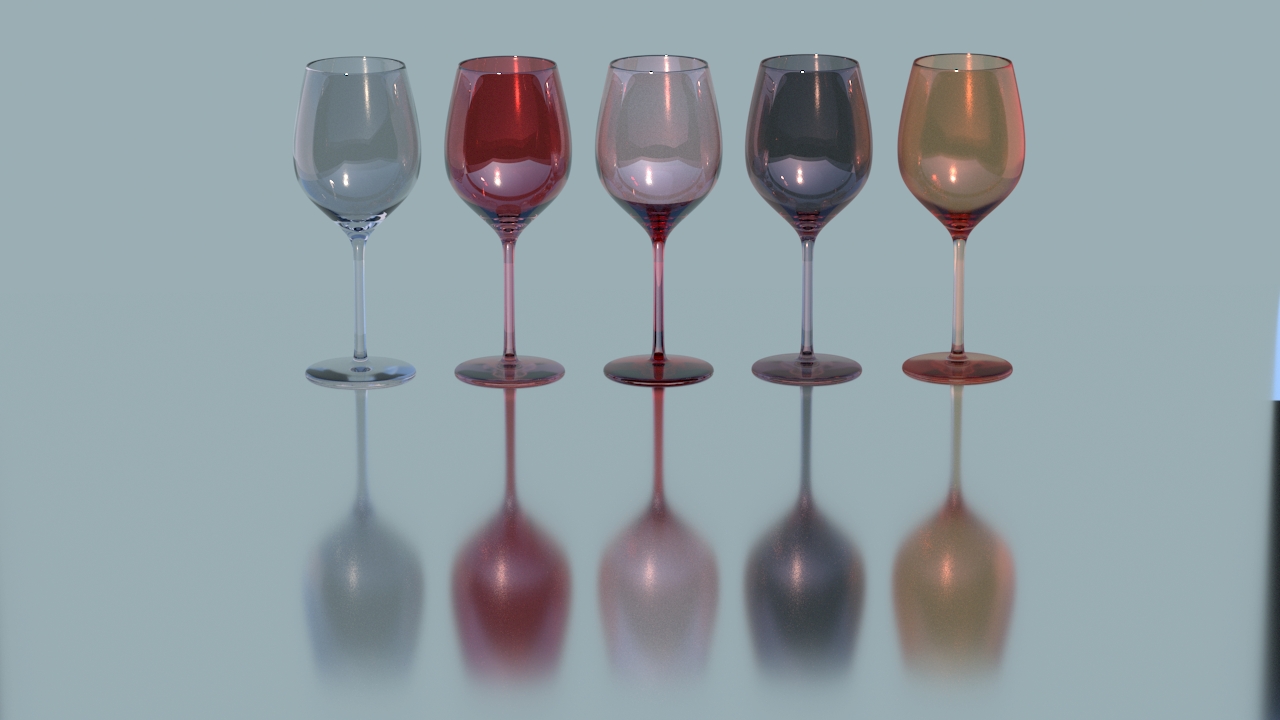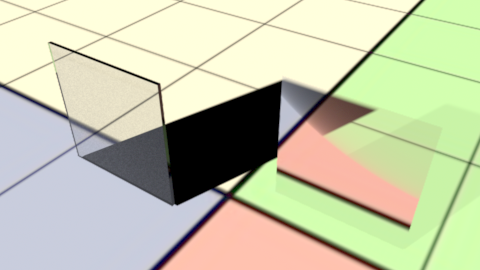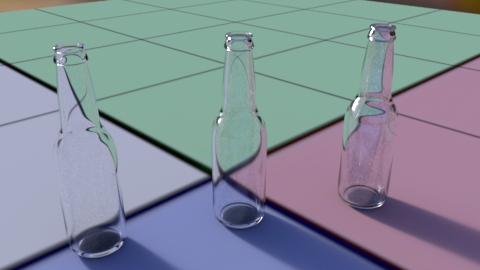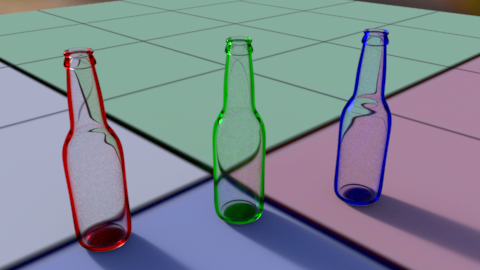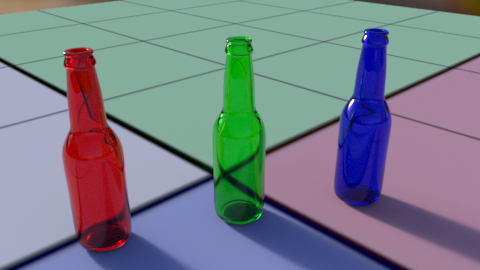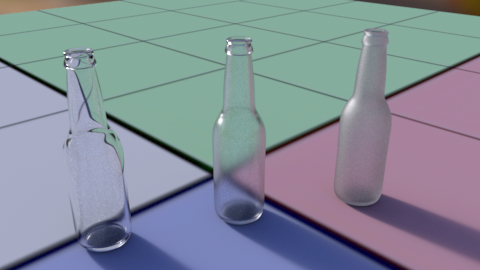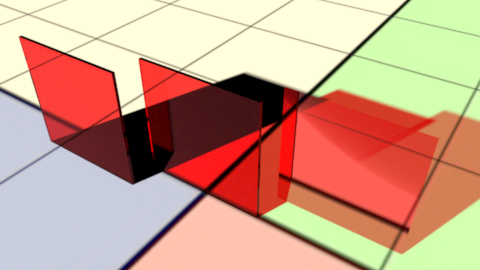- Thin
Enabling thin glass effectively eliminates the bending of
light as it travels through the glass. When set,
the absorption effect is disabled and colored shadows
are enabled. While light bending is disabled, the eta parameter
still governs the reflectivity of the surface.
Default: 0 (Off)
|
|
- Eta
Eta is the index of refraction is a physical property of
a material. Smaller values (relative to the medium) bend
light less. Reasonable eta values for glass are in the range
1.47 - 1.95.
Default: 1.5
|
|
- Reflection Color
Tints the reflected light.
Default: 1 1 1 (White)
|
|
- Refraction Color
Tints the refracted light. This effect occurs at the surface
and so you can connect textures to this parameter. Shadows
for thin surfaces are filtered by the refraction color.
Default: .8 .8 .8
|
|
- Roughness
Controls the roughness of the glass refractions. Larger values
produce more blurred highlights. Smaller values produce tighter
highlights.
Default: .01
|
|
- Absorption
Controls the volumetric absorption of glass. This control
is ignored when rendering as thin glass. Since absorption is
a property of the volume, it can't be textured over the surface.
Absorption is determined by the thickness of the material.
It's acceptable to select values outside of the [0, 1] range.
Default: .0
|
|
- Transmission Color
The color of light transmitted through solid glass.
Only has an effect when absorption is greater than 0
and when not thin. Since transmissionColor is a property of
the volume, it can't be textured over the surface. Generally
channel values should be less than 1.0, otherwise there will
be no absorption at any distance.
Default: .5 .5 .5
|
|
- Shadows
Select a shadowing behavior.
Default selects thin shadows when Thin is enabled. In this mode,
shadows from glass that do not have Thin enabled are "black",
since bent light paths are only captured through indirect bounces
(which can produce caustic effects). Selecting Thin Shadows
for solid objects produces a non-physical but useful
shadowing effect (e.g. colored shadows cast through colored
glass). If the value of absorption is non-zero the
absorption effect will also apply to the thin shadows
(of solid objects).
Default: 0
|
|
- Presence
Used to apply cut-outs to a shape. Primarily useful
for thin-glass applications.
Default: 1
|
|
- Bump Normal
An optional connection point for bumped normals.
Default: 0 0 0
|
|
